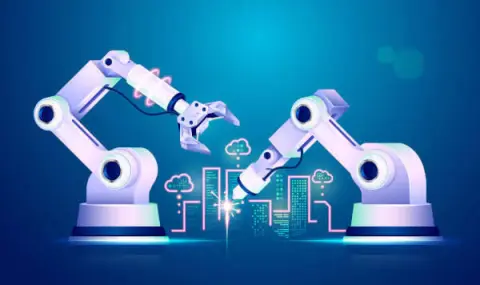
The construction industry is gradually adopting new technologies, particularly construction robots. Nevertheless, 3D printing has emerged as a viable solution for the sector’s numerous challenges. This method of additive manufacturing constructs objects layer by layer.
While industries like automotive and aerospace have utilized it for years, its possibilities in construction are only beginning to be recognized. 3D printing can transform design and building processes by improving speed, efficiency, and sustainability.
3D-printing robots bring several benefits to construction, including customizing parts for specific projects, significantly reducing waste through improved material usage, accelerating on-site component creation, and enhancing safety by reducing hazardous tasks for workers. Despite the potentially high initial investment in 3D-printing robots, their effectiveness leads to long-term cost savings.
Construction 3D printing (C3DP) begins with a digital 3D model from which layers are sliced. A printing robot or gantry system deposits material layer by layer along a programmed path until the entire structure is formed, using materials like metal, polymers, or concrete. There are two main types of 3D printing robots:
Robotic arms are the most common construction, extruding concrete back and forth. Other techniques include powder bonding and additive welding, with notable projects, such as a metal bridge in Amsterdam, showcasing these methods. Various structures, including houses and workplaces, have been successfully printed with this technology.

In additive manufacturing, several techniques are employed to create complex structures and components, particularly in robotic applications. Here are some prominent methods used in this innovative field:
Selecting the suitable material for a construction project is a crucial next step after deciding which 3D printing construction process to use. The materials selected should be appropriate for the specific project type, considering factors such as durability, cost, and environmental impact. While there are many options available, the following are some of the most commonly used materials in 3D printed construction:
3D printing robots positively influence nearly every aspect of the construction industry’s value chain, leading to significant advantages for the sector. This innovative technology has transformed our approach to construction by enhancing efficiency, supporting sustainability efforts, and alleviating supply chain challenges.
Conventional construction techniques can prolong project schedules by several months. Larger projects frequently surpass their timelines by 20% or more, leading to cost overruns of up to 80% of the original budget. In contrast, 3D printing can dramatically shorten project durations to just hours or days, depending on the size, cutting the total time by as much as 70%. As a result, contractors can take on more projects, boosting their revenue potential.
More cost-effective and durable 3D printing robots enhance material measurement for construction, cutting on-site waste by up to 60%. Furthermore, reduced material costs and lower storage requirements help companies avoid extra spending on surplus materials. This technology allows businesses to significantly save time and expenses, proving especially advantageous in areas with labor shortages where quick project delivery is crucial. By automating the construction process with 3D printing, firms can reduce labor expenses by up to 80%.
Compared to traditional manufacturing methods, 3D printing robots enable the creation of significantly more complex shapes and patterns. Contrary to older techniques that rely on recycling designs and models, 3D printing allows for the design of unique solutions. Using cutting-edge software, architects can create creative printed structures. For example, models are easily modifiable in the software and printed to fit if consumers request specific designs or unusual shapes for their homes or offices. Compared to conventional construction methods, this procedure requires less human labor and has minimal cost effects.
According to the United States Occupational Safety and Health Administration (OSHA), falls and unintentional contact with equipment are the leading causes of injuries among construction site workers, accounting for about one in ten injuries each year. The health and safety of workers on the job site are among the most significant benefits that construction robots and 3D printing technology have offered the construction sector. Employees can complete tasks more quickly and prevent workplace accidents by learning to use construction robots and printers.
Like many other inventions disrupting our way of working and producing, 3D printing takes longer to establish itself in the market. The environmental benefits and reduction in time and expenses are pretty promising. With each passing year, we foresee an increase in the inventiveness of builders using computer-generated three-dimensional materials in their construction projects. The use of robotics alongside 3D printing technology is poised to revolutionize construction processes further, enhancing efficiency and precision in building projects.
We’re here to help! Whether you have questions, need support, or want to know more about us and our services, fill out the form below and our team will get back to you promptly.
Let’s explore the future of AI and robotics together.
